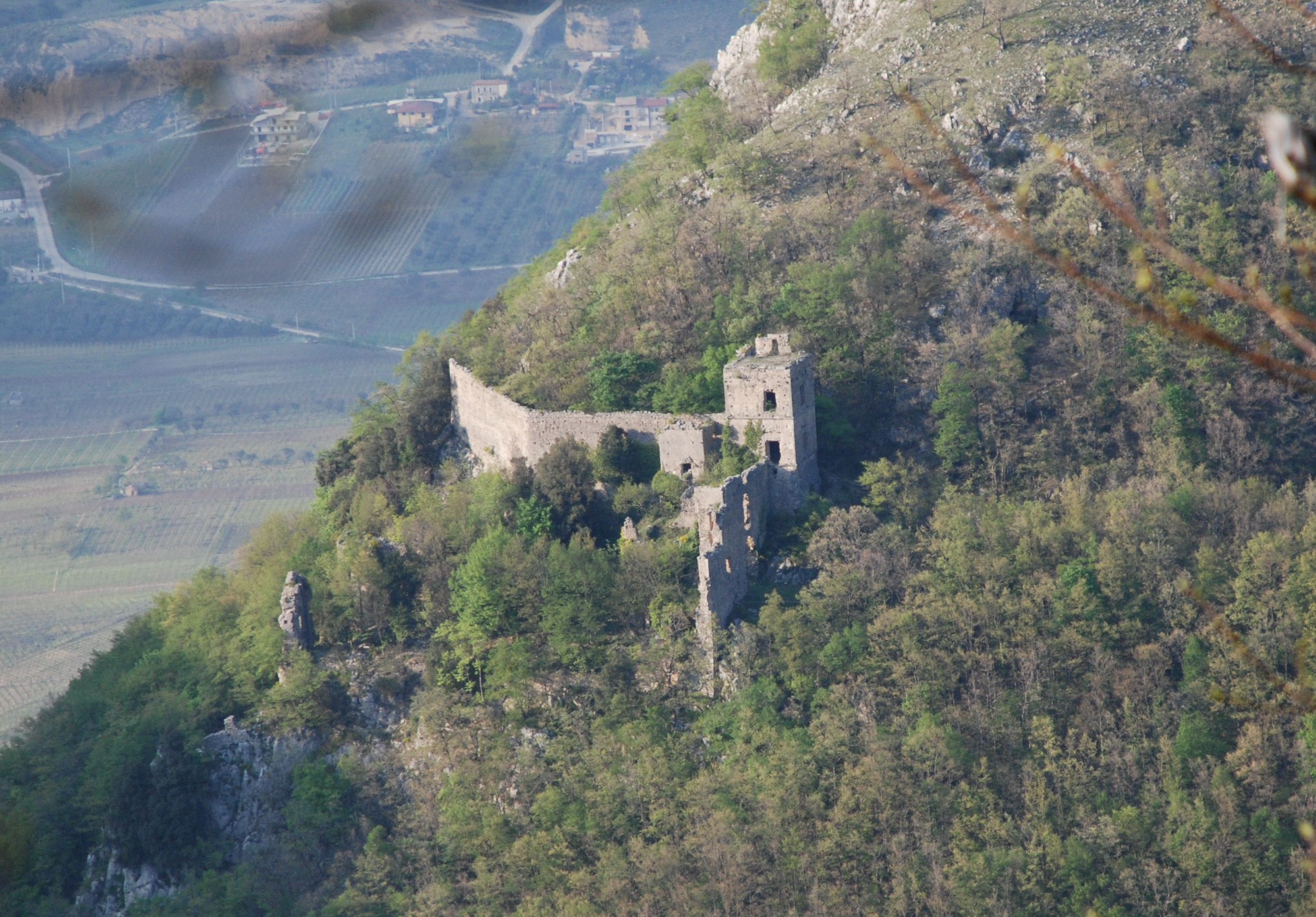Abbey Of Santa Maria In Gruptis on:
[Wikipedia]
[Google]
[Amazon]
 Santa Maria in Gruptis is a former abbey located in the '' comune'' of Vitulano, in the Campania region of Southern Italy. Founded in the 10th century and used by several monastic orders, it was deconsecrated in 1705, and is currently in ruins.
Santa Maria in Gruptis is a former abbey located in the '' comune'' of Vitulano, in the Campania region of Southern Italy. Founded in the 10th century and used by several monastic orders, it was deconsecrated in 1705, and is currently in ruins.


Archive of 92 parchments written in the abbey
{{Coord, 41, 11, 34, N, 14, 36, 58, E, type:landmark_region:IT, display=title Benedictine monasteries in Italy 10th-century establishments in Italy Buildings and structures in the Province of Benevento
 Santa Maria in Gruptis is a former abbey located in the '' comune'' of Vitulano, in the Campania region of Southern Italy. Founded in the 10th century and used by several monastic orders, it was deconsecrated in 1705, and is currently in ruins.
Santa Maria in Gruptis is a former abbey located in the '' comune'' of Vitulano, in the Campania region of Southern Italy. Founded in the 10th century and used by several monastic orders, it was deconsecrated in 1705, and is currently in ruins.

Name
The name "in gruptis" refers to the karst caves in the area, which were used to gather and distribute water to the abbey. The oldest recorded name was ''Santa Maria di Monte Drago'', in reference to the mountain where the abbey is located. The two names were used in the 12th century with inconsistent spellings, such as "Santa Maria di Monte Drocho", "Santa Maria in Cripta", "Santa Maria de la Grocta". In a 1545 decree by the then abbot Blasio Sellaroli the abbey was named ''Santa Maria dello Vallo di Vitulano'' ("Saint Mary of the Valley of Vitulano").Location
The former abbey is located at an elevation of 607 metres above sea level, on Mount Drago, one of the mountains composing the Taburno Camposauro massif, in the province of Benevento. It belongs to the ''comune'' of Foglianise, although geographically it is part of the Vitulano municipality. It is located on the side of a gorge known as "funno", in a steep and strategic position with a view over the valley. It can be reached only by foot, with hiking trails.
History
The abbey was founded between 940 and 944 by one of the Longobard princes of Benevento, either Atenulf II or Atenulf III. The first recorded documents related to the abbey date back to 1164. It was inhabited by a succession of monastic orders: at first theBenedictines
, image = Medalla San Benito.PNG
, caption = Design on the obverse side of the Saint Benedict Medal
, abbreviation = OSB
, formation =
, motto = (English: 'Pray and Work')
, foun ...
monks, for whose use it was initially intended, then the Celestines and then the Humiliati. The abbey owned several fiefs. In 1303 the Anjous attempted to incorporate the abbey into another abbey, that of Santa Maria in Mazzocca, near Foiano di Val Fortore
Foiano di Val Fortore (Campanian: ) is a ''comune'' (municipality) in the Province of Benevento in the Italian region of Campania, located about northeast of Naples and about northeast of Benevento.
Foiano di Val Fortore borders the following ...
. A popular revolt from the inhabitants of the area halted the plan.
In 1660, the abbey was given to the Camaldolese
The Camaldolese Hermits of Mount Corona ( la, Congregatio Eremitarum Camaldulensium Montis Coronae), commonly called Camaldolese is a monastic order of Pontifical Right for men founded by Saint Romuald. Their name is derived from the Holy Hermita ...
monks, but it was abandoned after the 1688 Sannio earthquake
The 1688 Sannio earthquake occurred in the late afternoon of June 5 in the province of Benevento of southern Italy. The Moment magnitude scale, moment magnitude is estimated at 7.0, with a Mercalli intensity of XI. It severely damaged numerous t ...
. It was deconsecrated by Cardinal Orsini (later Pope Benedict XIII) in 1705 because of its state of neglect and the continued attacks by brigands
Brigandage is the life and practice of highway robbery and plunder. It is practiced by a brigand, a person who usually lives in a gang and lives by pillage and robbery.Oxford English Dictionary second edition, 1989. "Brigand.2" first recorded usa ...
, who later used it as a refuge because of its strategic position. The parchments produced in the abbey were bought at the beginning of the 19th century by antiquarians, and were donated by their heirs to the Società Napoletana di Storia Patria
''Società'' (Italian: ''Society'') was an Italian communist cultural magazine published in Italy between 1945 and 1961.
History and profile
''Società'' was founded as a quarterly magazine in Florence in 1945. The founders were Ranuccio Bianchi ...
( it), where they are still kept.
Ruins
Today large portions of ruins of the abbey remain. Still visible are the tower, the entrance portal, and part of the encircling walls, which were built at a later date. Of the ancient church remains the apse.References
External links
Archive of 92 parchments written in the abbey
{{Coord, 41, 11, 34, N, 14, 36, 58, E, type:landmark_region:IT, display=title Benedictine monasteries in Italy 10th-century establishments in Italy Buildings and structures in the Province of Benevento